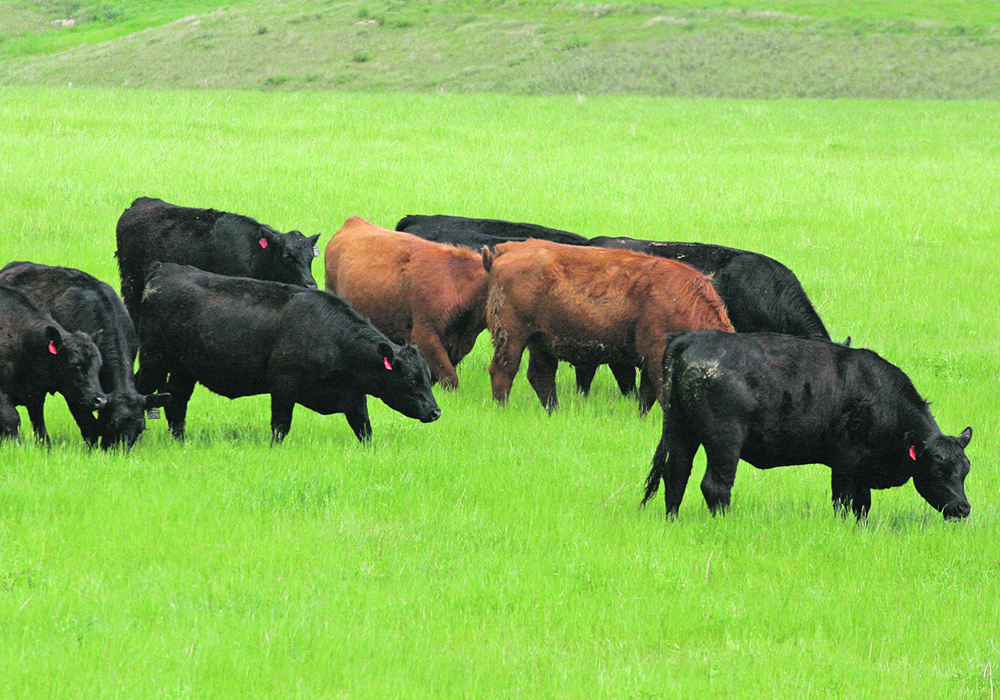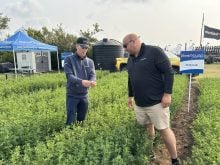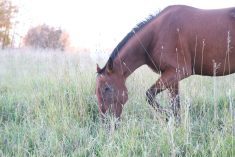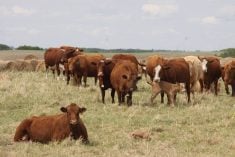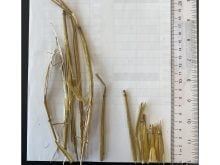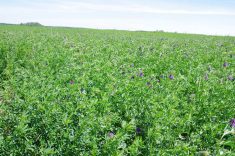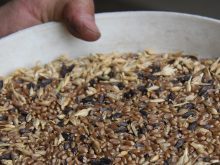Researchers put alfalfa, sainfoin, birds-foot trefoil, cicer milkvetch, meadow bromegrass and orchard grass to the test
Which type of pasture plants do steers prefer? Bart Lardner decided to find out.
The researcher at the University of Saskatchewan grazed steers on small plots to see how several different forage species performed under grazing conditions.
The treatments consisted of different varieties of alfalfa, sainfoin, birds-foot trefoil, cicer milkvetch, meadow bromegrass and orchard grass. Three 13-acre blocks were divided into strips where the treatments were planted. The five-year trial from 2019-23 was done at Clavet, Sask. However, the cicer milkvetch and birds-foot trefoil failed to establish.
Read Also

Beef cattle more prone to trace mineral deficiencies
The trace mineral status of our cows and calves is a significant challenge for western Canadian producers and veterinarians.
Lardner found that steers preferred Foothills alfalfa, and the Killarney OG alfalfa was least popular. Varieties such as Cronus and other mixed treatments all ranked relatively closely. However, Lardner says dry conditions limited the yield and quality of the 14 treatments, and preference was related to both.
“The alfalfa outperformed others,” says Lardner, who is the strategic research program chair in cow-calf and forage systems. “Sainfoin was high quality and least preferred and less economical versus the other treatments.”
When it comes to soil, Lardner says different rooting structures in different treatments and cover crops are useful, especially during drought.
“Obviously, soil moisture was utilized more consistently in the perennials versus the annuals, but that shallow moisture did benefit those annual treatments that we had in this study,” Lardner says.
Drones and observation were used to determine which treatments the steers preferred “to spend more time on over that grazing period, and then see if we can correlate that preference ranking with actual forage yield and the nutritive value of these treatment species.”
Lardner says the team looked at biomass quality, nutrient value, energy, protein, fibre and how well the different species behaved under a mob-grazing situation. They also researched how well the plants grew in the absence of light (etiolation) to get an indication of root reserves.
In the latter trial, Lardner says 38 percent of the growth occurred in the first 14 days and 99 percent within 56 days. Cronus alfalfa had the greatest growth among legumes and Armada meadow bromegrass had the greatest growth overall.
Lardner spoke about his research at the Saskatchewan Beef Industry Conference in January, noting much of his recent research has focused on the environment as it relates to the beef industry.
“There’s a lot of really good news stories in the industry that producers are doing that we need to talk about going forward,” he says.
“There’s a lot of forage acres in this province, in Canada as a whole. And you producers are managing those resources and it’s your intent to leave them in better condition than when you inherited them.”


